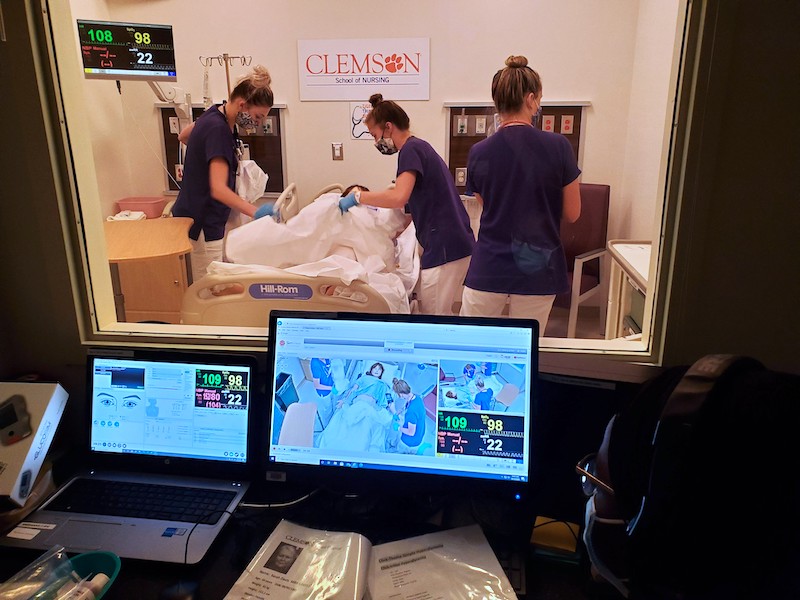Simulation Education

Senior Simulation
Before graduation, student nurses take part in Senior Simulation, an experience in which students are tested on their nursing abilities through a series of patient care scenarios in the school’s Clinical Learning and Research Center at Edwards Hall, which replicates a state-of-the-art hospital setting.
Advantages of Simulation Learning
Simulation education is a bridge between classroom learning and real-life clinical experience.
A range of easily accessible learning opportunities:
Simulation offers scheduled, valuable learning experiences that are difficult to obtain in real life. Learners address hands-on and critical thinking skills, including knowledge-in-action, procedures, decision-making, effective communication and critical teamwork behaviors. Because simulation is a controlled environment with intentionally planned encounters, it offers students the opportunity to take part in clinical scenarios they may not encounter during clinical rotations.
The freedom to make mistakes and learn from them:
Practicing in a simulated environment allows learners to make mistakes without the risk of causing patient harm. With the opportunity to practice without expert intervention, learners are able to see the outcomes of their clinical decisions and identify how those decisions critically impact patients.
The learning experience can be customized:
Simulation can accommodate a range of learners from novices to experts. Beginners can gain confidence and “muscle memory” for tasks that allow them to advance to more demanding parts of patient care while experts can better master the continuously growing technologies , from minimally invasive surgery and catheter-based therapies to robotics, without putting patients at risk during the learning process.
Detailed feedback and evaluation:
Real time events and the pace of healthcare operations can be limiting to the learners time to reflect on why things took place and how to improve performance. Whereas, simulations take place in a controlled environment and can be followed by videotape-supported debriefings and time to reflect on decisions made during patient care, thus allowing learners to see how their choices may have affected the patient.
